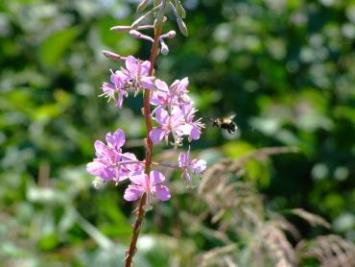
Newfoundland is one of the remaining safe zones for the world’s honeybees, and that puts our rry farmers to import non-native bumblebees for pollination does cause concern.
“It’s not impossible that one or both of those mites can be found in bumblebees, and then there could be transfer,” she says.
“Frequently you’ll go out and you’ll see three different things pollinating the same flower. So they’re kind of rubbing up on each other and so something could move from one to the other…not only is it potentially bad for the honeybee operations or industry, it could also be bad for native pollinators that are here. Because there are native bumblebees and, of course, if they get those things, that’s not good for them either.”
While the provincial import regulations make no specific mention of bumblebees, or if the province has anything in place to minimize this risk, in an email to Downhome on this issue, the Department of Natural Resources stated: “The Wildlife Division of the Department of Environment requires a permit, with restrictions, to import non-native species such as bumblebees.” The department also said it is “proactive in working with industry and new entrants to ensure all safety precautions are taken to minimize the risk of introducing these pests. Other jurisdictions in Canada are also aware of our regulations and support our efforts to keep Newfoundland free from these pests/diseases.”
Lack of pests also means our bees are less grouchy. In 2009 and ’10, Geoff and the department’s Agrifoods branch did a survey of honeybee hives and colonies in Newfoundland and found something very interesting.
“Lots of times we’ll have to go through frame by frame and the bees are getting mad and they’re trying to sting you through your suits and stuff. But in Newfoundland, for the most part, they were really gentle. They were like flies. They’d just come land on you and I think they’re just not as stressed as other bees (in) other colonies in other areas,” Geoff says, adding with a laugh, “so like the friendly Newfoundlanders, it’s the same for the bees.”
 Certificate Analisis
Certificate Analisis


